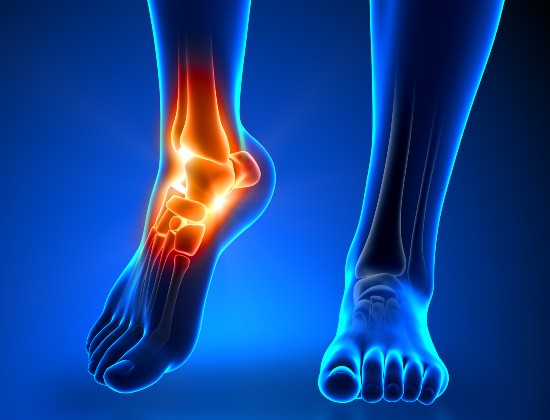Peroneal tendon problems
Behind the prominent bump on the outside of your ankle are two tendons known as the peroneal tendons. They run down from the outside of your leg below the knee and go behind the ankle and into the foot. Behind the ankle they are securely ‘tied down’ within a smooth sheath that allows the tendons to move freely, stabilising the foot and helping it to turn outwards.
How do problems develop?
- Acute injury, tears and tendon dislocation: like any tissue, these tendons can be suddenly torn or stretched through injury such as an ankle strain
- Acute inflammation of the tendon tunnel or tendinitis: quite sudden pain and discomfort with inflammation of the area, often due to over-use or a new activity
- Chronic degeneration of the tendon or tendinosis: this long term condition can be caused by an initial injury, leading to wear and tear in the tendon
- You are more likely to have peroneal tendon problems if you have high arched feet, rheumatoid arthritis, psoriasis, or diabetes.
What are the symptoms?
- Acute injuries or tendinitis can cause pain, swelling and heat in the ankle. There may be a feeling of popping or snapping of the tendon on the outside at the ankle
- Occasionally the sheath around the tendons may become damaged and tendons dislocate around the side of the fibula, causing weakness and a painful ‘clicking’ feeling on the outside of the ankle
- The ankle may give way and feel unstable, or be very painful when you are active
- Long term degeneration can result in pain and swelling on the ankle, along with weakness or instability, causing problems when you take part in high intensity exercise
Can it become worse?
Yes. It’s important to have the ankle assessed by a surgeon as soon as possible to make sure that the correct treatment is started. If you ignore the problem, it can cause other more serious problems including a complete tendon rupture (tear), which is more difficult to treat.
How is it diagnosed?
It’s important to have an accurate diagnosis by a specialist as this type of injury can often be mistaken for a simple ankle sprain. Where there is a long term degenerative problem, X-rays can sometimes show a flake of bone from the ankle if the tendon has dislocated or calcium has built up. You may also have an ultrasound scan to check for splits or dislocation.
How is it treated?
You may be advised to take anti-inflammatory medication. Further treatment depends on the specific type of problem:
Acute tendinitis
Reducing your activity, resting, and having a boot fitted that immobilises your foot is often successful but very active patients, especially keen athletes, sometimes find this unsatisfactory
Dislocated tendons or a tear in a tendon
Non-operative treatment: reducing activity, resting, and having a boot fitted that immobilises your foot (as with acute tendinitis) can help. You may also be referred for physiotherapy to help stabilise the peroneal tendon function.
Surgery: if you still experience symptoms, you may need to have surgery to repair a tear or split in the tendon or to relocate the tendons and repair the sheath. This has an 80-90% success rate, with many patients able to return to their previous sporting activities.
Tendinopathy
Non-operative treatment: long term symptoms can be improved with rest, immobilisation and gradual introduction of physiotherapy and supervised exercise. Shoe wear can be modified if necessary
Surgery
If non-operative treatment does not relieve the symptoms, you may be offered a procedure to clear out the damaged tissue (debridement) from around the tendon area
Important: This information is only a guideline to help you understand your treatment and what to expect. Everyone is different and your rehabilitation may be quicker or slower than other people’s. Please contact us for advice if you’re worried about any aspect of your health or recovery.


